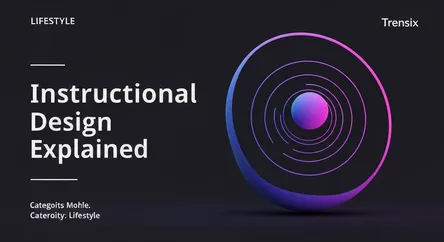Lifestyle
Instructional Design Explained

Discover instructional design, the systematic process for creating effective learning experiences. Learn why this EdTech field is booming today.
What is it?
Instructional design is the systematic process of designing, developing, and delivering learning experiences. More than just creating content, it's a practice that blends educational theory, psychology, and technology to ensure learning is effective, efficient, and engaging. Professionals in this field analyze learning needs and goals to create a complete educational journey. They build everything from online courses and training modules to instructional manuals and video tutorials, often using frameworks like the ADDIE model (Analysis, Design, Development, Implementation, and Evaluation) to structure their work.
Why is it trending?
The demand for instructional design has surged with the global shift towards remote work and online education. Companies now rely on e-learning to train a distributed workforce, while universities are expanding their digital campuses. This has created a need for high-quality, engaging online content that goes beyond a simple slide deck. The growth of the EdTech industry further fuels this trend, as platforms compete to offer the most effective and user-friendly learning solutions. Well-designed courses have become a key differentiator in a crowded digital learning market.
How does it affect people?
Instructional design directly impacts learners by making education more accessible, logical, and enjoyable. It transforms passive information into active learning, which improves comprehension and knowledge retention. For professionals, it has opened up a dynamic and in-demand career path at the intersection of creativity and technology. For businesses and educational institutions, investing in instructional design leads to more impactful training programs, better student outcomes, and a higher return on their educational investments, ensuring that learning goals are systematically achieved.